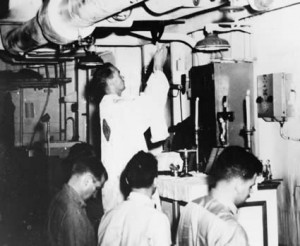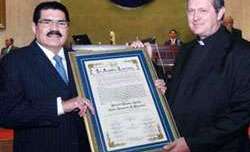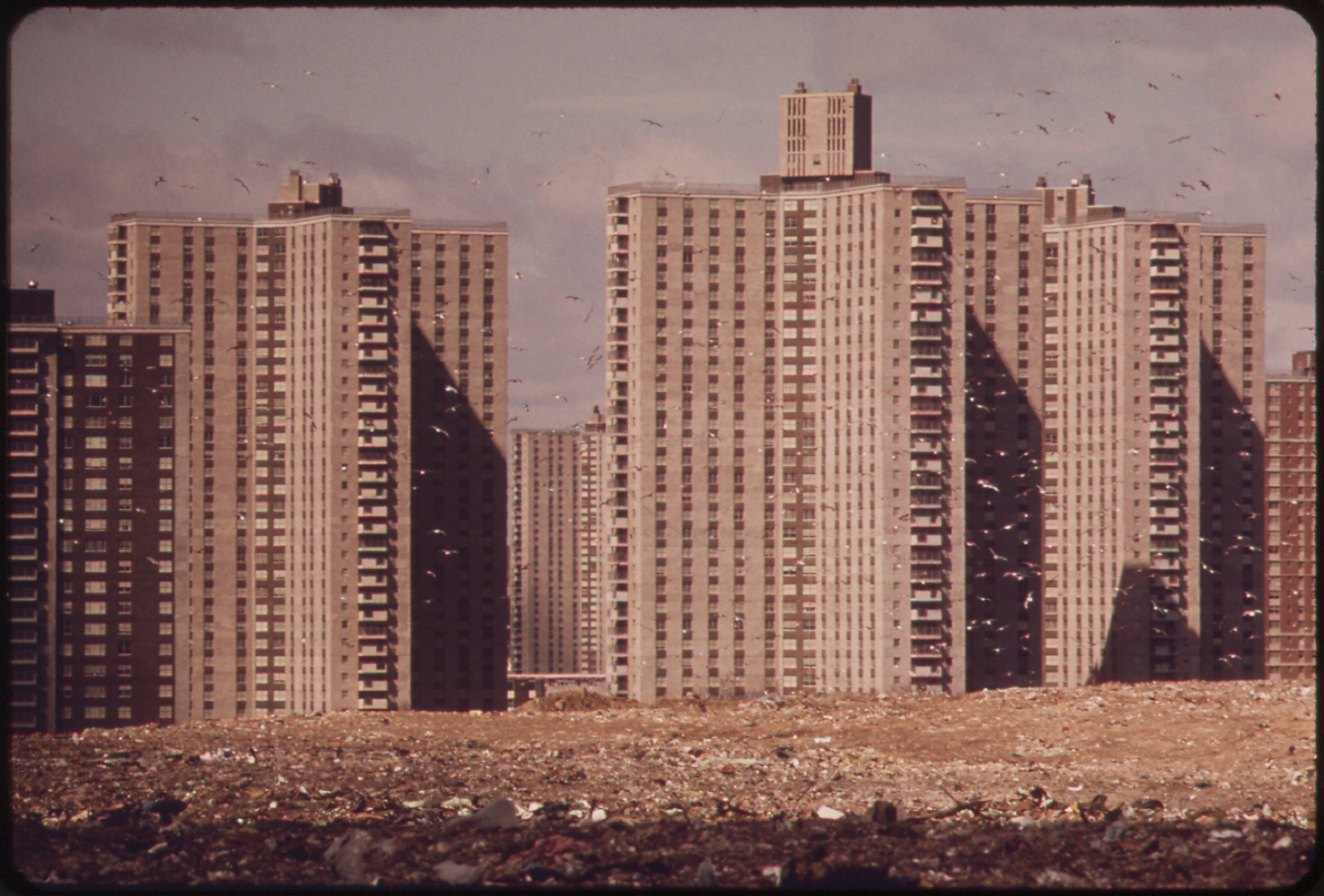A half-century later, Archbishop Joseph T. Ryan cannot forget that bloody September day in the South Pacific, 1944:
“It was a Friday, the Feast of Our Lady of Sorrows,” the recently retired head of the nation’s Catholic military archdiocese remembers.
And it turned out to be a grimly appropriate memorial. That day thousands of American and Japanese were killed in some of the most ferocious and bitter fighting of World War II.
When he shipped out as a chaplain with the First Marine Division, the 31-year-old Father Ryan was unaware that he was to take part in a critical American offensive, one aimed at wresting from Japanese control the islands that formed the gateway to the Philippines.
A key to the American strategy was the capture of the Palau Islands, some 500 miles southeast of the Philippines.
It was in the Marines’ amphibious landing on Peleliu, one of the Palau, that the young priest got his first glimpse of the horror and heroism of war. More than 1,000 Marines died in the landing; hundreds more were wounded.
For the young Chaplain Ryan and his fellow soldiers it was a fearful time and their faith was sorely tested.
“I remember that first night on Peleliu,” he recalled. “I had my gas mask and the Blessed Sacrament in the foxhole. Every young boy—we were all worried about dying—wanted to sleep next to the Blessed Sacrament.”

His ministry in the 115-degree heat on Peleliu lasted about a month. He said Masses lying on his stomach in the sand, or standing in a foxhole with a medic’s stretcher for an altar. He traveled between the forward artillery-observer posts, a dangerous front line where few chaplains dared to tread. At each post he would stop to bless the Protestant gunners and give absolution and communion to the Catholics.
One day, having just given communion to three teenage soldiers, he was walking away when suddenly he was knocked to the ground by the force of a terrible explosion. He wheeled around to see that two of the soldiers had been “blown to pieces.” The third, barely alive, was writhing on the ground, his “arms and legs blown off.”
As Chaplain Ryan bent over the dying soldier, the youth asked about the fate of his comrades. Archbishop Ryan will never forget the dialogue that followed:
“Father, how about me, am I going to die?”
“Yes, you are.”
“Hasn’t God been good? Jesus was within my buddies and he must’ve taken them right to Heaven. He’s in me now, let me die now.”
And the young man died.
A half century later, Archbishop Ryan honors the memory of the fallen.
“I’ve always felt that soldier’s faith was like the faith of the centurion,” he said, referring to the the Roman soldier whose faith in Jesus is celebrated in the Gospel and whose words of faith—“Lord, I am not worthy …”— are still repeated by Catholics every time they celebrate the Eucharist.
At 77, Archbishop Ryan has seen his last tour of duty. He returned recently to his home town of Albany, New York, where he was ordained to the priesthood in 1939.
Six years ago, Pope John Paul II tapped him to be the nation’s first head of the Archdiocese of Military Service, overseeing the spiritual needs of the 1.6 million Catholics in the military. Prior to that, since its inception by Pope Benedict XV in 1917, the military chaplaincy had been under the jurisdiction of the archbishop of New York.
“Things were more simple,” Archbishop Ryan admitted in a recent interview in which he looked back on a career bracketed by the Second World War and the recent war in the Persian Gulf, a career in which he was honored by three popes, decorated by King Hussein of Jordan for his work on behalf of Palestinian refugees, and cited for extraordinary valor in World War II.
Pacifists and Peace
Despite the great debate in American Catholic circles since the Vietnam era over the morality of modern warfare, he insists that the killing and training to kill required of soldiers are not incompatible with the religion of Christ who said “love your enemies” and “blessed are the peacemakers.”
He reminds his interviewer that the Catholic Church has never been a pacifist Church and that the Church has always taught that there is such a thing as a “just war.”
“We do not create peace when we are passive” in the face of aggression such as Iraq’s invasion of Kuwait, he said. “And we do not find peace just because we run away from conflict.”
From the South Pacific to Southeast Asia to Beirut and the Persian Gulf, Archbishop Ryan sees American troops as agents of freedom and security, keepers of world peace, and defenders of the weak against the ambitions and machinations of dictators and nations.
He has no patience for the charge that the U.S. military fights to ensure American control over raw materials, economic markets, and strategic territories.
“I am not naïve, but I would like to believe that we have a Christian government and what they tell is true,” he said in reference to the Gulf War.
There is, in the soldier’s vocation, much of the self-sacrificing love that Jesus preached, Archbishop Ryan emphasizes. And there is an important place for military chaplains on the frontlines.
“A chaplain is a priest,” he explained. “His job is to minister to the souls of the people entrusted to him, to bring peace to those who serve in ambiguity and to pray with them: ‘deliver us from evil.’”
Extraordinary Valor
As a chaplain, Archbishop Ryan himself was cited for “extraordinary valor” for his role in the landing at Peleliu.
He had been ordained just three months when Germany invaded Poland in September 1939, triggering the start of the war. And he was still an assistant pastor in Albany when Japan’s sneak attach on Pearl Harbor on Dec. 7, 1941, drew America into the conflict.
He doesn’t remember feeling any burning anger at the Japanese enemy, only a patriotic impulse to serve his country.
“The young men were leaving, and they needed chaplains, so I asked if I could be a chaplain,” he said. Young Father Ryan was one of 3,000 Catholic chaplains called to duty by the nation’s military ordinary, Archbishop Francis Spellman of New York, and one of more than 800 to be decorated.
As a chaplain, Archbishop Ryan tried to carve out sacred spaces aboard battleships and on the mysterious islands of the South Pacific, staking out small plots of hallowed ground amid the killing fields of war.
For the young chaplain, the rhythms of the war took their place within the sacred seasons of the Church calendar.
Archbishop Ryan remembers vividly the midnight Christmas Eve Mass he celebrated in 1944 on Guadalcanal. The Marines were in the Solomon Islands to train for the landing on Okinawa, but they were filled with anxiety and fear, having been warned that Okinawa would be among the most dangerous campaigns of the war.
Chaplain Ryan had heard confessions for several hours each day during their weeks in Guadalcanal, and more than 1,000 Marines turned out for the Christmas vigil.
“It was a bright, moonlit night,” he reminisced. “While Mass was going on, we could hear the gentle waves coming into the shore. We had made a backdrop for the altar out of chicken wire, and laced it with wild, red orchids, which looked like poinsettias. We used artillery shells to hold the candles on the altar. During the Consecration, probably in violation of the liturgy, they all softly hummed ‘O, Holy Night.’
“It was amazing how joyous they all were. We were all so far away from home and family. I for one, and I’m sure many of the other young men, had the best Christmas they ever would have because all of us became closer to Christ than we ever could have were we at peace.”
By Lent, the Marines had moved to Truk Island, the staging ground for the great assault on Okinawa. They were on 24-hour alert, constantly watching for Japanese kamikazes. Many were shaken as they watched a blasted American aircraft carrier limp back to port.
“Seeing that ship go by, and how battered it was certainly made us all think about death and those on board who had given their lives,” the archbishop said.
And their fears were well-founded, for in the bloody battles on Okinawa, nearly 8,000 American died, along with 110,000 Japanese.
Military historians remember Okinawa as the last major amphibious landing of the war, a strategic victory that won for American a crucial beachhead just 300 miles off Japan.
Archbishop Ryan remembers that the Okinawa campaign began on Easter 1945, and that previous day—from four o’clock in the afternoon until he celebrated Mass at midnight—he had heard the moving confessions of those about to do battle.
“In those confessions, we were all getting ready to die. Yes, they were poignant. I was impressed with the wonder of them bearing their souls to me and getting ready to die for what they believed.”
In those confessions, Archbishop Ryan saw once again the centurion’s faith, a faith expressed in the brotherhood of comrades in arms, in their passion to conquer hatred and injustice.
It is a faith that he says still endures in America’s armed forces, 50 years after America joined the war among the nations, a faith that endures in a world still fighting for peace.
Originally published in The Evangelist (August 1, 1991); Catholic Heritage (January-Feburary 1992)
© David Scott, 2010. All rights reserved.


